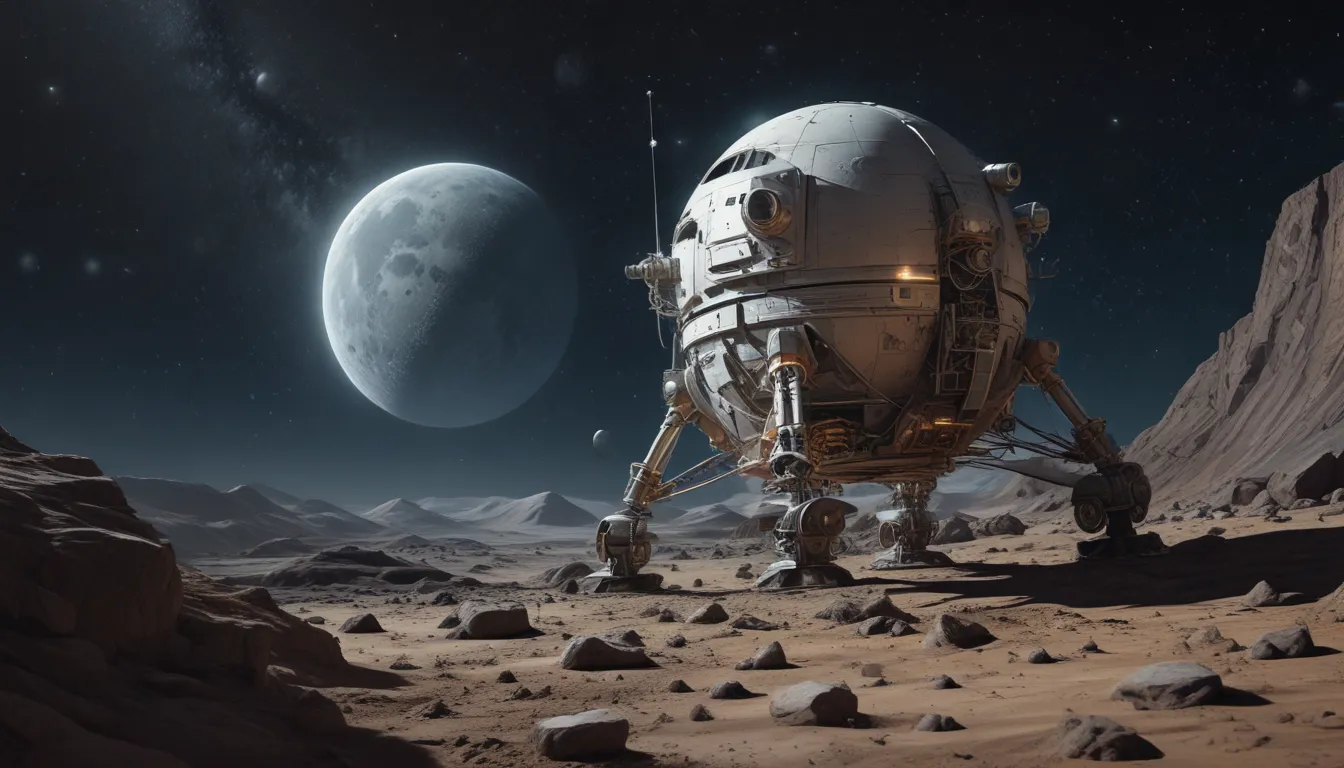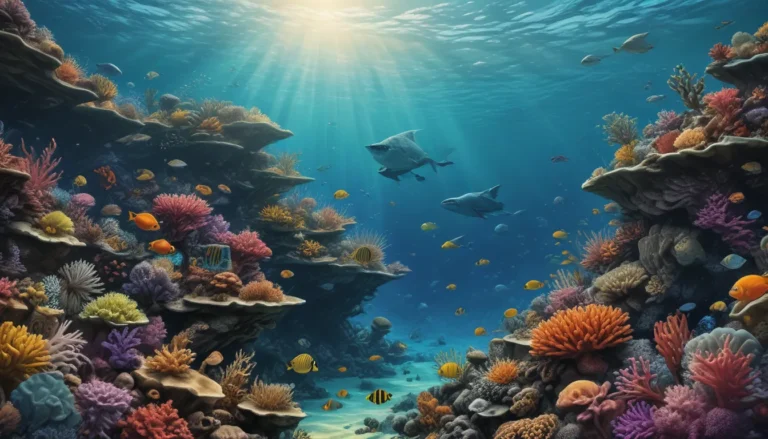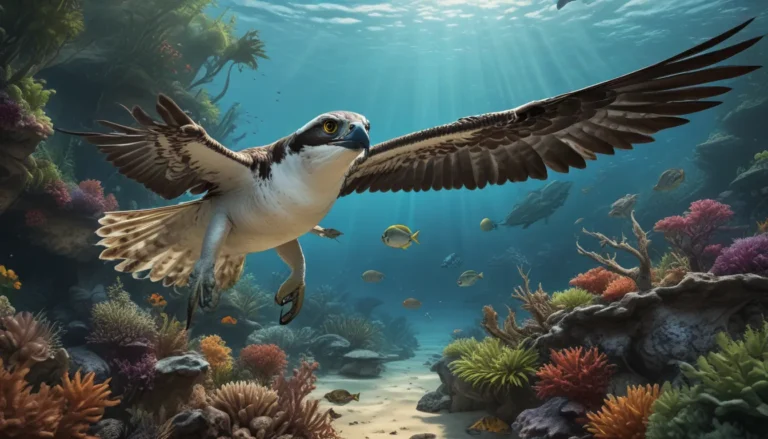The pictures we use in our articles might not show exactly what the words say. We choose these pictures to make you interested in reading more. The pictures work together with the words but don’t take their place. The words still tell you the important facts.
Have you ever looked up at the moon and wondered about the incredible feats of human exploration that have taken place on its surface? From the iconic Apollo 11 mission to the quirky golf game on Apollo 14, the history of lunar exploration is filled with fascinating facts waiting to be discovered. Join us on a journey through 20 surprising nuggets of information that reveal the awe-inspiring world of lunar missions, moonwalkers, lunar samples, and much more. Let's explore the mysteries of the moon and the remarkable achievements that have shaped our understanding of Earth's celestial neighbor.
Unveiling the Lunar Realm: Key Takeaways
- The absence of air and weather on the moon allows astronauts to experience lower gravity and perform extraordinary feats. The moon's surface, covered in regolith, preserves footprints and artifacts for millions of years and influences Earth's tides.
- Lunar exploration continues to unveil captivating facts about the moon, sparking curiosity and wonder among all who gaze up at the night sky.
The Historic First: Apollo 11’s Landing
In 1969, the monumental Apollo 11 mission made history as Neil Armstrong and Buzz Aldrin became the first humans to walk on the lunar surface, leaving an indelible mark on the course of human exploration.
The Moon’s Unique Atmosphere
Unlike Earth, the moon has no atmosphere, resulting in a lack of weather, wind, and air pressure on its surface, creating a starkly different environment from our home planet.
The Mysteries of Regolith
A layer of fine dust known as regolith covers the moon's surface, composed of small rock fragments and dust formed by meteor impacts over billions of years, adding to the moon's enigmatic allure.
Lunar Landscapes: A Cratered Canvas
The moon's surface is rich with craters, a result of being bombarded by asteroids and meteors over time due to its lack of atmosphere, showcasing the scars of cosmic collisions.
Lunar Records: The Longest Moonwalk
Eugene Cernan, commander of Apollo 17, holds the record for the longest time spent on the moon's surface, exploring for an impressive 22 hours and 31 minutes.
Gravity on the Moon
With gravity approximately one-sixth of Earth's, the moon allows astronauts to experience higher jumps and easier object lifting, showcasing the unique physical properties of our celestial neighbor.
Lunar Extremes: Temperature Fluctuations
The lunar temperature ranges from scorching highs of 260 degrees Fahrenheit (127 degrees Celsius) during the day to bone-chilling lows of -280 degrees Fahrenheit (-173 degrees Celsius) at night, highlighting the harsh conditions of space exploration.
Earth From the Moon’s Perspective
The iconic "Earthrise" photograph taken by Apollo 8 astronaut William Anders offers a breathtaking view of our planet from the lunar surface, emphasizing the beauty and fragility of Earth.
Moonwalkers: Exploration’s Pioneers
Twelve astronauts had the opportunity to walk on the moon between 1969 and 1972 during the Apollo missions, paving the way for further exploration and discovery.
Lunar Drift: Moving Away from Earth
The moon slowly drifts approximately 1.5 inches (3.8 centimeters) farther away from Earth each year, a subtle but profound astronomical phenomenon.
Moon Dust Mysteriously Scented
Distinctive reports from Apollo astronauts describe the smell of moon dust resembling gunpowder, adding a curious olfactory dimension to lunar exploration.
Moonquakes and Seismic Activity
The moon experiences moonquakes caused by gravitational interactions with Earth, showcasing the dynamic geological processes occurring on its surface.
The Soft Landing Achievement: Luna 2’s Legacy
In 1959, the Soviet spacecraft Luna 2 made history by becoming the first human-made object to softly land on the moon, marking a pivotal moment in lunar exploration.
The Enigmatic Lunar Seas
Known as lunar seas or maria, these dark patches on the moon are not bodies of water but vast plains formed by ancient volcanic eruptions, adding intrigue to the moon's geological history.
Apollo Golf: A Lunar Sporting Moment
Astronaut Alan Shepard's improvised golf shot on Apollo 14 using makeshift equipment added a playful element to lunar exploration, showcasing the human spirit of curiosity and ingenuity.
Global Lunar Explorers
Several nations, including Russia, China, India, and Israel, have sent missions to explore the moon, contributing to the diverse tapestry of lunar exploration efforts across the globe.
Timeless Footprints: Lunar Legacies
The footprints left by astronauts on the moon's surface are a lasting testament to human exploration, preserved for millions of years due to the absence of wind or water erosion.
The Hidden Far Side
Due to its synchronous rotation, the moon's far side remains perpetually hidden from Earth, adding an element of mystery to our celestial neighbor's ever-present face.
Lunar Lore and Legends
From conspiracy theories to myths and speculation, the moon has captured humanity's imagination for centuries, inspiring tales of mystery and wonder about its enigmatic nature.
Tidal Forces of the Moon
The moon's gravitational pull plays a crucial role in shaping Earth's tides, creating the ebb and flow of the oceans and influencing the rhythm of life on our planet.
Conclusion
The journey of lunar exploration has been a remarkable odyssey, filled with astonishing discoveries and achievements that have expanded our understanding of the cosmos. As we gaze up at the moon and reflect on the feats of human ingenuity that have graced its surface, we are reminded of the endless possibilities that lie within our reach. The moon's mysteries continue to beckon us, offering a gateway to scientific advancement, exploration, and the potential for human habitation beyond Earth.
Exploring the Cosmos: FAQs
- Moon Visits: How many times has the moon been visited by manned missions?
-
The moon has been visited six times by manned missions, with the Apollo program leading the way in lunar exploration.
-
Distance to the Moon: What is the average distance between the moon and Earth?
-
The average distance between the moon and Earth is approximately 238,855 miles (384,400 kilometers).
-
Future Lunar Missions: Are there plans for future lunar missions?
-
Yes, several countries and space agencies, including NASA's Artemis program, have ambitious plans for landing humans back on the moon by 2024.
-
Moon Studies: What have we learned from studying the moon?
-
Studying the moon has provided valuable insights into solar system formation, the moon's geology, the presence of water ice, and the potential for future exploration.
-
Lunar Colonization: Are there plans for establishing colonies on the moon?
-
Yes, there are ongoing discussions and plans for establishing human colonies on the moon, aiming to utilize its resources for long-term scientific research.
-
Evidence of Missions: Can we see evidence of previous lunar missions?
-
Yes, the landing sites of Apollo missions can be observed through telescopes and satellite imagery, serving as visible proof of humanity's ventures to the moon.
-
Cosmic Exploration: How does lunar exploration contribute to our understanding of the universe?
- Lunar exploration serves as a platform for scientific research, testing technologies, and potentially revealing insights into the origins of life and the universe at large.
Embark on a journey of cosmic discovery as you unravel the mysteries of lunar exploration. From the triumphs of Apollo missions to the allure of lunar landscapes, the moon continues to captivate us with its enduring mysteries and endless possibilities. Let your curiosity soar as you explore the wonders of our celestial neighbor and embrace the spirit of exploration that drives us to reach for the stars.






